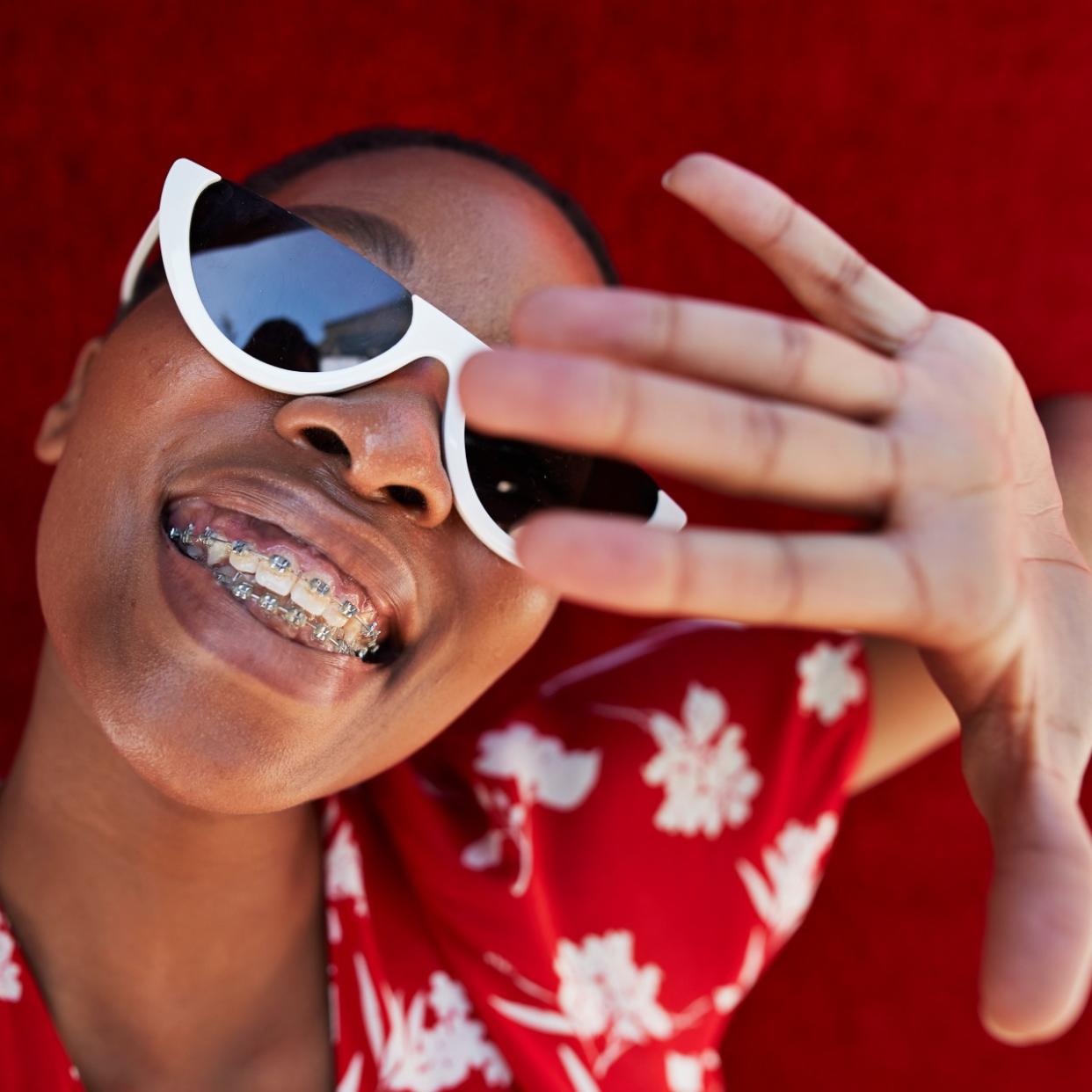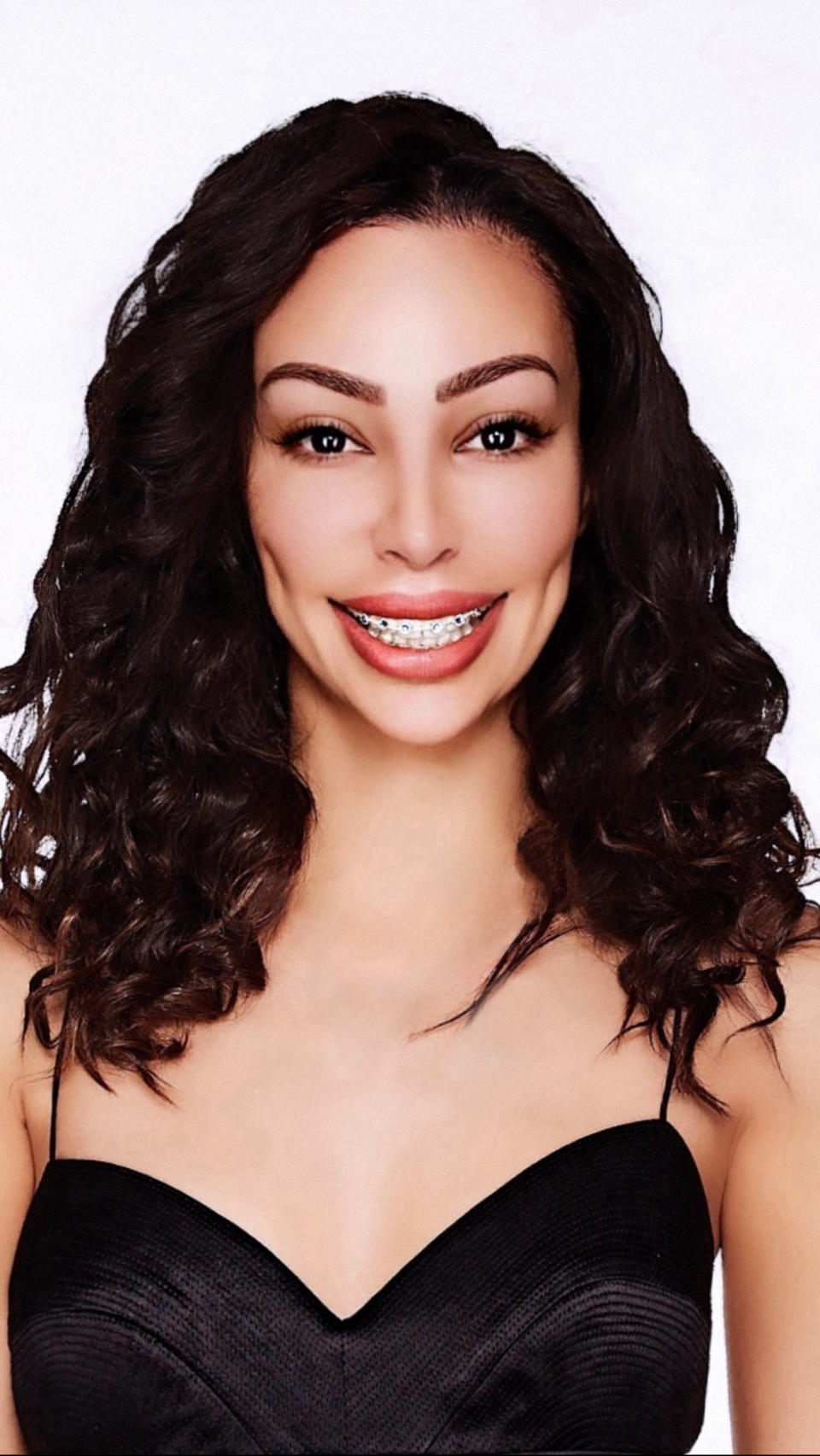Welcome to the Adult Braces Boom

Imagine you’ve secured an invite to the Grammys—and an afterparty. For most working in the fashion industry, the promise of a red carpet moment will precipitate a day of beauty preparations. But for Linda Oliver, a fit model with nearly two decades of experience, the immediate hours ahead of her Grammys appearance involved a trip to Dr. Daniel Rubinshtein’s Brooklyn-based dental office. The purpose: To add Swarovski crystal bling to her adult braces. “I didn’t want to be a wire mouth, I wanted to be cool—and it looked so much cooler than I even expected. Everyone thought it was a grill, but it was actually brace bling,” Oliver, who attended the after party with Brandon Howard, says. “Dr. Daniel worked his magic and I made a statement.”
Oliver’s fashion-forward approach to straightening her smile doesn’t exist in a vacuum. Singer and actress Rina Slaywayama gave braces a nostalgic nod in 2021. Rapper Coi Leray made gold braces synonymous with her signature look for the greater part of last year. Logic being, if adult braces are required, they might as well double as an accessory. The reverse holds true, too, with the orthodontics’ industry’s evolution expanding to nearly invisible lingual braces which get positioned behind the teeth, or ceramic braces, which blend in more naturally with your enamel. Into the fashion-forward metal mouth aesthetic or not, it’s impossible to deny that adult braces are on the up and up.
A photo posted by coileray on
According to a study completed by Marketplace, nearly 32 percent of orthodontic patients in 2023 are adults, a stark contrast to even two years ago, when the American Association of Orthodontics reported 25 percent of US orthodontic patients were adults. The braces boom is multi-faceted—equally inspired by the Zoom era, millennial’s (relatable) opposition to retainers, and the destigmatization of a metal mouth post puberty.
The Rise of Brace Face
Oliver is a woman with great dental hygiene—in fact, she doubles as a surgical technician. But, like many, didn’t have braces as a kid. While she skipped the notoriously traumatic chapter of teenage awkwardness, she took it upon herself to correct her bite as an adult. Her first thought: Invisalign. Objectively, it’s the most discreet. Unfortunately, three separate treatments left her essentially where she started. “I got frustrated,” she says. “It just wasn’t working.” That’s where the metal prongs came in.
“Both traditional braces and an Invisalign style treatment can be an effective tool to achieve straight teeth,” explains Dr. Rubinshtein, who treated Oliver. “But for the majority of doctors, traditional braces can handle more complex and severe cases. They’re also great for patient compliance since they are on the teeth and working 24/7.”

Cosmetics aside, braces are being employed more and more frequently as a medical fix for fairly extreme discomfort that arises with age. “There’s a spike in adults not just wanting, but needing, some sort of ortho related treatment to improve their quality of life. Many patient who have a misaligned bite also have related issues such as headaches, TMJ pain, neck pain, teeth sensitive, gum swelling, and more.”
Often times, this discomfort could have been avoided by wearing a retainer. But many are finding themselves back to snaggle tooth square one and prepared to embark on braces for the second time around. Rest assured, adult braces take a slightly different form than the metal—and neon rubber bands—you marched around with decades ago. Most notably, adult braces work faster. “The braces that kids get are meant to stay on for much longer, because the braces move teeth as the facial and jaw structure of the kid matures. Many of the children's braces are meant to help with jaw development during their maturity and growth spurt, which is why the braces are on for much longer,” notes Dr. Rubinshtein. “Adult braces are meant to be on for a shorter period of time.”
Aesthetically, you’re also looking at a greater breadth of options. “One major change in recent orthodontics is that we can offer a variety of appliances that are very aesthetic and comfortable which makes adults less hesitant to get braces,” says Dr. Marina Gonchar, DMD and Founder of Skin to Smile. Not only are modern day post-care retainers going to be slimmer and more comfortable than their predecessors, but physical braces have evolved 10-fold. “Adults can choose from metal braces, ceramic brackets, which appear clear on the teeth, and lingual braces, which are placed behind the teeth and imperceivable to those around you,” she explains. “Adults can also choose between different techniques of placement such as direct bonding, when the doctor puts on the braces individually, or indirect bonding, where the doctor designs the final smile in a software system and customizes the brackets and wires to be used for the patient.”
Whether you decide to go the indiscreet route in the name of good teeth, or embrace metal with a hint of “brace bling” (Oliver’s words, not mine), know you’re not on your dental journey alone. It would seem adult braces are well on their way to becoming just as commonplace as Botox. Let’s face it: We’re in a dental renaissance.

